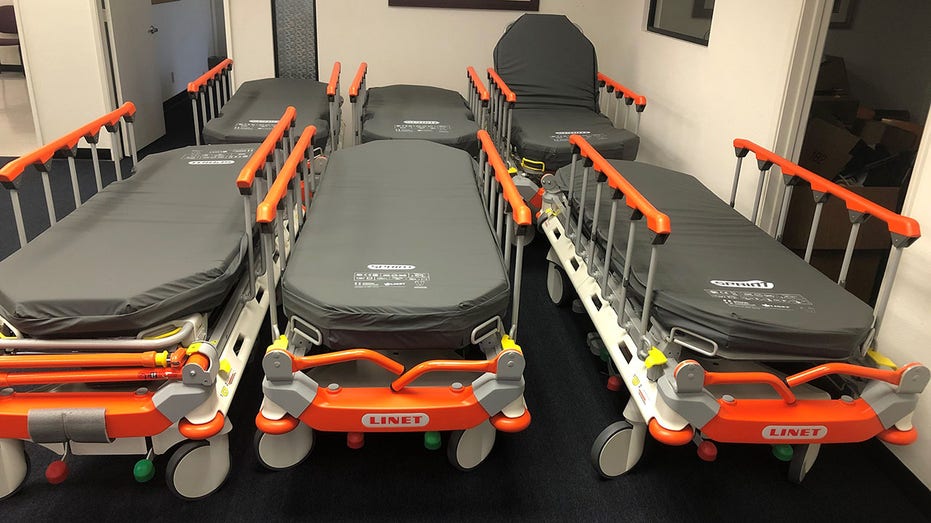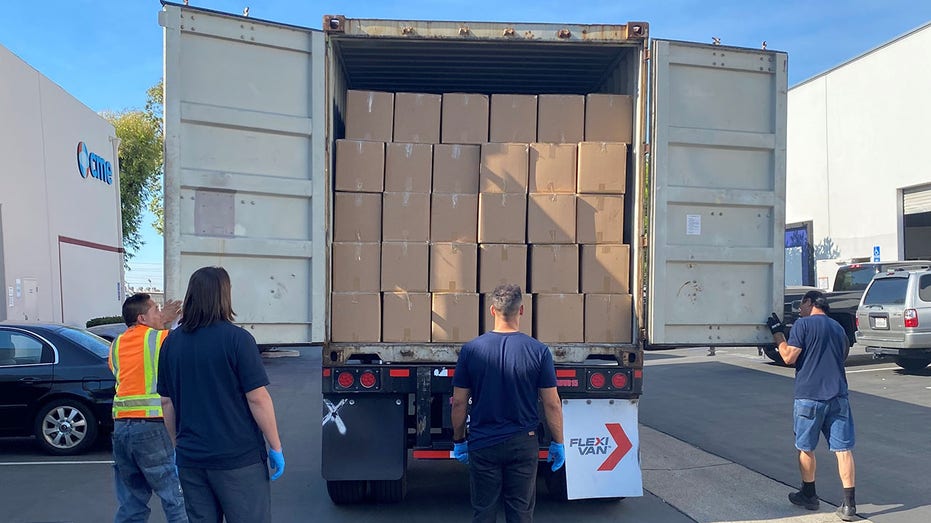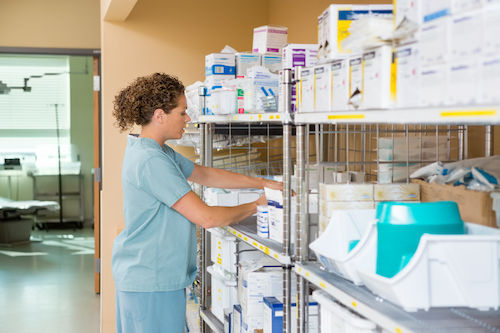Pandemic proves that healthcare logistics demands a global perspective
By Mark Thill
A year ago, were you aware of the term “dwell time?” Did the word “container” connote anything other than Tupperware? Did you know how many weeks in a typical month an over-the-road trucker is away from home? Had you ever stopped at the Corwith Yards on the Southwest Side of Chicago to see what goes on at a railroad intermodal freight terminal?
How quickly would you have made the connection between a resin factory fire in Texas and the availability and price of medical products? How about a cold spell in the Lone Star State, a hurricane in Puerto Rico, a cargo ship stuck in the Suez Canal, a drought in Taiwan affecting microchip production, or a virus causing concern among authorities in a Chinese city named Wuhan?
Due to world events of the past 24 months, healthcare supply chain executives are finding that what they once took for granted, what they learned from the logistics gurus, doesn’t necessarily work during pandemics.
“PPE supply was the biggest challenge for 2020,” says Mark Henderson, senior vice president of sales and marketing for Concordance Healthcare Solutions. “The issues in 2021 have been much broader, as it is not just about aligning supply and demand, but rather the challenges related to getting product from the manufacturers to the distributors and providers. You can have an accurate picture of product needs and manufacturing volumes, but if you cannot get product from point A to point B in a timely fashion, you have an issue.”
Getting products from point A to point B ain’t what it used to be. The question is, will it ever return to “normal?” Based on comments gathered by Repertoire, even if we don’t see a full-blown paradigm shift, we will see changes, especially:
- Advances in visibility – transparency – across the supply chain.
- Creative ways to store products, such as 3PLs or what one distributor calls “living stockpiles.”
- Increased attentiveness to alternative or substitute products, just in case.
The situation
“Things are more difficult now than at any other point in the pandemic,” Abby Pratt, senior vice president for global strategy and analysis for AdvaMed, the medical manufacturers association, told Repertoire in December. (The Advanced Medical Technology Association, or AdvaMed, represents companies that produce medical devices, diagnostic products and digital health technologies.) “In the early stages, it was limited to things like PPE and COVID technologies. But now, delays, bottlenecks and disruptions are making headlines, just as they are in every other sector. It’s not only affecting products and materials imported into the United States, but also raw materials, supplies and components that are coming into the U.S. for manufacturing and production in this country.”
James Sembrot, senior vice president, U.S. Supply Chain, Cardinal Health, says, “As an industry, the supply chain is facing increased global demand for product and movement of product, primarily from Asia-Pacific to the United States. Additionally, the supply chain is encountering container shortages, port congestion and operational constraints, vessel availability challenges, disruptions in shipping schedules and increased wait times, labor shortages and heightened shipping costs.”
Ocean freight delays and raw material inflation have caused significant constraints, adds Robert Rajalingam, president, U.S. Medical Products and Distribution, Cardinal Health. “Resins, corrugate and metals have experienced significant cost increases. Because of the winter storm impacts, and prior to that, the fire at the resin manufacturer, Total Petrochemicals, we’re dealing with a market that’s been constrained for well over a year.
“During a global pandemic environment and with many manufacturers on allocation, the challenges compound,” he says. “Plus, resin is not only used to form plastics, like sharps containers, but it is also used in non-woven fibers, tubing, flexible packaging, etc.”
Container costs have grown to eight times the normal rates, he says. Over a recent 12-month period, Cardinal Health spent $48 million on charters to bring in product from Asia. “But this system is not cost effective and not a long-term strategy.”
A crisis by any other name
“Part of the definition of ‘crisis’ is a time of great difficulty,” says Henderson. “Personally, I prefer to think of it as a tremendous challenge that we will need to resolve collaboratively across suppliers, distributors, providers, logistics organizations and state and local agencies. Any supply chain that has a patient at the end of it needs to be prioritized.”
The difference between 2020 and 2021? “I’m not sure I would call [the current situation] a crisis anymore, as it was in 2020,” says Steve Martin, senior vice president of supplier management for Nashville-based NDC Inc. “Product is moving. It’s just moving slower and at a much higher cost. Supply chain issues have negatively impacted our fill rates as we still have a significant number of products that continue to be on allocation or in short supply. Also, the increase in lead times from suppliers makes it difficult to quickly react to changes in product demand from our distributors.
“The rising cost of freight across all modes has significantly impacted the cost to serve suppliers, NDC and our distributors,” he continues. “We have seen unprecedented increases in product costs, sometimes appearing as an ‘order surcharge,’ which is directly related to the global and national supply chain issues.”
Supply chain and clinical professionals may not be using the word “crisis” to describe the current situation, but they are definitely in pandemic mode, says Mike Schiller, senior director of supply chain for the Association for Health Care Resource & Materials Management of the American Hospital Association. In addition to sourcing supplies through traditional channels, they are diversifying vendor portfolios and employing conservation and utilization strategies.
Two years into the pandemic, the industry has moved beyond PPE-only shortages to shortages in other business sectors that are directly or indirectly affecting the healthcare supply chain, he says. These include:
- Semiconductors: As of late December, shortages were causing 9-to-12-month equipment delays.
- Aluminum products (crutches, walkers, canes): In response, some organizations are seeking donations from the community.
- Blood collection tubes: Varying, rolling backorders. Solutions and conservation strategies include using EMRs to view and manage orders, review blood draw requests.
- Pediatric supplies (e.g., diapers, formula, nipples, small French urine collection catheters, butterfly needles and umbilical cord catheters, neonate blood pressure cuff size 4, cardiac leads). Solutions include purchasing individual components – urine specimen cups, sticks, wipes, etc. – and assembling kits, exploring reuse of disposable blood pressure cuffs or moving to reusable cuffs.
- Resin products (e.g., suction canisters, sharps containers, soap containers, decontam wipes tubs, hand soap and foaming soap dispensers). Solutions include exploring reusable sharps containers.
Inflation is another concern, says Schiller. Although GPO and other contract pricing has remained relatively stable throughout the pandemic, supply chain professionals can expect increases due to supply/logistics demand and constraints, new supply and multisource contracts, and diversified vendor portfolios. “We are encouraging supply chain leaders and healthcare organizations to explore other non-labor cost-savings opportunities, with a key area being purchased services.”
Visibility
A common theme among supply chain executives is the need for greater visibility across the supply chain. But given the many constituencies involved – raw materials suppliers, factories, ocean carriers, railroads, trucking firms, med/surg distributors and health systems – that won’t be easy.
“Raising the bar on accuracy and visibility of data from suppliers is critical as we move forward,” says Henderson. “Combined with visibility to our on-hand inventories and demand signals from customers, we can move toward a proactive supply chain powered by actionable information. Automating this process … is key.”
In November, AdvaMed, the Health Industry Distributors Association (HIDA) and International Safety Equipment Association (ISEA) announced they were collaborating with port leaders to test processes for prioritizing medical supply containers. The organizations have engaged the Federal Maritime Commission and the White House Supply Chain Disruption Task Force in their efforts.
“But we have to approach it terminal operator by terminal operator, because they are not interoperable,” says Pratt. “There’s no single system spanning all these different actors. That’s why we are looking at greater interoperability and visibility.”
Curtis Lancaster, chief supply chain officer, Westchester Medical Center Health Network (WMCHealth), Valhalla, New York, says the health system’s supply chain team collaborates regularly with its clinicians and distribution partners, and uses AI-powered software to identify global trends that may affect the supply chain. “We also collaborate with onshore and near-shore partners that reduce our reliance on offshore suppliers,” he says. WMCHealth comprises 10 hospitals and includes an academic medical center, acute care children’s hospital, multiple community hospitals, skilled nursing facilities and two practices with over 850 providers.
Cardinal Health is making “significant investments in technology to drive greater visibility, sustainability and resiliency,” says Rajalingam. In March 2020, the company began working with freight-tracking software startup FourKites Inc. on a pilot to track shipments of personal protective equipment between manufacturing plants and the company’s distribution centers.
Centralized advanced planning data allows those in the supply chain to jointly conduct forecasting and supply chain simulations and plan alternative options, says Rajalingam. “It also drives network inventory optimization.
“Through extensive collaboration with leading 3PL organizations, we are expanding access to secure equipment (i.e., containers), capacity and alternative routes; increasing visibility to enable quick, data-backed decision-making; increasing visibility to the location of shipments across oceans, through ports, etc.; and managing supply chain costs.”
No paradigm shift on JIT
Choke points, logjams and bottlenecks notwithstanding, healthcare supply chain experts aren’t predicting a widespread about-face on just-in-time. “I don’t think you’ll see a paradigm shift,” says Pratt. “Companies will do more to invest in risk mitigation and might build these learnings into their processes, but when things normalize, they will want to be efficient.” That holds true for products that are perishable as well as those in which innovation occurs rapidly. “If you stockpile too much, you will have some obsolescence. So it’s a balance.”
Concordance Healthcare Solutions found 3PL storage to be in high demand during 2020 and into 2021, says Henderson. “Much of this was PPE products, but the service can apply across any category. We will continue to ramp up these programs for both providers and suppliers to increase access to products.”
Says Mike Schiller, “Just-In-Time, Low Unit of Measure and Lean principles will need to be re-evaluated across the entire supply chain continuum. COVID has highlighted our need for more transparency, robust analytics and improved utilization data – the capture of product use at the point of consumption.” Moving from par inventories to demand planning, where possible, may help achieve better alignment between on-hand inventory levels and actual use.
Solutions
Charlotte Perkins, interim vice president of supplier and portfolio management for Owens & Minor, says the company’s Americas-based manufacturing has helped maintain the supply of personal protective equipment throughout the pandemic. “We manufacture our own raw materials in North Carolina and convert them into N95 respirators, isolation gowns, surgical gowns, ear loop masks and other PPE in our plants in Texas, Mexico and Honduras.”
In addition to self-manufactured products, Owens & Minor partners with more than 1,000 branded manufacturers. “We have recently seen minor supply chain challenges with IV solutions and syringes, as well as a slight increase in demand for IV catheters,” says Perkins, adding that the company’s allocation practices have enabled it to fulfill demand even during the peak of the pandemic.
For more than 10 years, Owens & Minor has provided an outsourced logistics offering to help customers address pandemic storage requirements and to manage supply streams from multiple sources, she adds. In 2020, the company expanded this capability across the entire network, with more than 25 Owens & Minor distribution centers now actively delivering Outsourced Logistics services. In addition, Owens & Minor clients can now subscribe to alerts via the SMART Card (Supplier Metrics & Accountability Report Tracker) for bi-weekly snapshots and updates, keeping them aware of product constraints or supply chain disruptions.
Steve Martin says the NDC team has devised several solutions to help members maintain an adequate supply of products and equipment, including:
- Distributor allocations based on historical demand or as directed by suppliers.
- Lead time adjustments from suppliers to accommodate supply chain issues, sometimes increasing the amount of stocked inventory to account for longer lead times.
- Careful review of new business opportunities on products that have longer lead times to protect NDC’s ability to service existing business from distributors.
“NDC doesn’t manage the inbound logistics of shipments from suppliers, which is managed by the suppliers themselves,” says Martin. “So it is important for us to be well informed of the status of inbound containers or shipments. Many suppliers have established regularly occurring calls with NDC to review the status of containers/shipments, update production lead times, review product allocations, and provide general business updates.”
Many NDC members have established multiple supplier relationships for impacted products, where possible, he adds. “Some members have begun sourcing more products directly from manufacturers to increase their control over product visibility and access. This includes looking at alternative ports of entry for products that source via ocean freight.
“Many NDC distributors are also working with their provider customers to encourage them to increase their safety stock on critical items. Some have expanded existing warehouse space and/or added warehouses in strategic geographical areas, so they can provide stockpile services to their provider customers.”
Cardinal Health’s Robert Rajalingam says that the company is actively lobbying Capitol Hill with other industry associations for resolution of the current backup of medical products. “We are also working with the federal government to prioritize releasing backlogged containers with critical medical supplies. Plus, we’ve had a high level of involvement with HIDA and AdvaMed, as well as the ports of Los Angeles and Long Beach and the Federal Maritime Commission, to structure a broad-based prioritization process for identifying and expediting critical medical supplies through the ports.”
Says AHRMM’s Mike Schiller, “Moving forward, successful supply chain professionals will need to possess a global acumen, understanding how disruptions, like raw material shortages, labor, political unrest, etc., may impact their supply chains. They will need to remain strategic and reduce or eliminate risk from their supply chains through deeper collaboration with existing suppliers while looking to build relationships with local and community businesses.”





